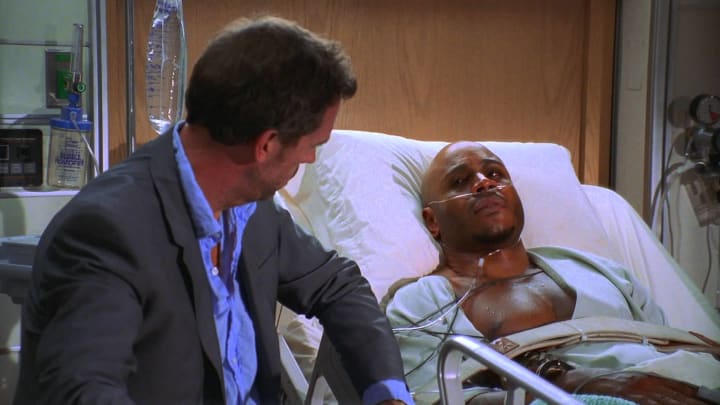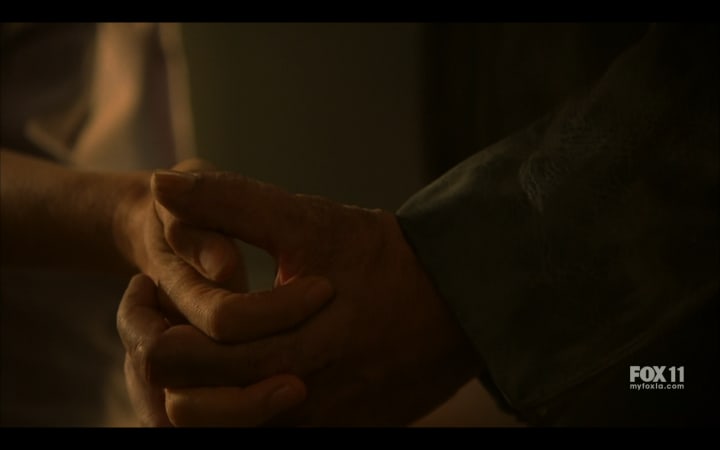4 Bizarre 'House' Diseases that Actually Exist
Over the course of 8 seasons and 177 episodes, there have been many unusual diseases. Here are some of the craziest ones that are real

If you have never seen an episode of House M.D., then you are missing true TV brilliance. House M.D. has incredible writing and acting and is worth watching just for Hugh Laurie's portrayal of Dr. House. The one criticism I always hear about House M.D. is how unrealistic it is. Virtually every episode ends with House figuring out what rare disease is killing his patient. House only deals with rare diseases and in the first episode his employee, Dr. Foreman, says "first year of medical school: If you hear hoofbeats, you think horses, not zebras." What separates House from other doctors is that he only deals with Zebras, all his cases have some element that makes them unique. The problem with having 177 unique diseases is that sometimes you need to stretch the truth a little. However, sometimes even the craziest illnesses are 100% real and here are some of the weirdest ones.
Subacute Sclerosing Panencephalitis

Paternity S1 Ep 2
Subacute Sclerosing Panencephalitis (SSPE) is also known as Dawson Disease, Dawson encephalitis, and measles encephalitis. It's an extremely rare and chronic form of brain inflammation that progresses. It's caused by an infection with a mutated measles virus. An estimated 1 in 10,000 people that have been infected with measles will develop SSPE, but a recent study claims that the rate for babies with measles is around 1 in 609. There is currently no cure for SSPE, which is usually fatal, but it can be managed by medication if treatment is started at an early stage. The patient usually has the measles under the age of 2. Then they are asymptotic for an average of 6-15 years and then comes gradual, progressive psychoneurological deterioration. As the patient deteriorates they develop personality changes, seizures, myoclonus, ataxia, photosensitivity, ocular abnormalities, spasticity, coma and eventually death.
What made it complicated in this episode of House is that the main character, Dan, was adopted and his parents never told him. It turns out that Dan's birth mother was never immunized so Dan became infected as an infant.
Pheochromocytoma

Acceptance S2 Ep 1
The second season of House begins with a patient named Clarance who's on death row for killing four people. In the end, House realizes that Clarance has a pheochromocytoma. A pheochromocytoma is a rare, usually benign, tumor that develops in the center of the adrenal gland. Those who suffer from a pheochromocytoma have high blood pressure as a result of the hormones secreting from the adrenal glands. The high levels of adrenaline could be the cause of Clarance's rage that led him to killing four people. The episode ends with one of the doctors going to testify on Clarance's behalf at his latest appeal hearing.
Androgen Insensitivity Syndrome

Skin Deep S2 Ep 13
Alex is a 15 year old model who collapses after a fashion show. House is convinced she is sick as a result of drug abuse but in the end the answer is much more interesting. It turns out Alex has Male pseudohermaphrodism, which is now called Androgen insensitivity syndrome (AIS). In this condition, a male fetus is resistant to the effects of testosterone. The fetus will develops testes, but that's as far as it goes in male sexual development. The testes will not descend, and the patient will appear visually like any other female, although they tend to enter puberty later than other girls. They also never develop a menstrual cycle since there are no ovaries or uterus.
Alien Hand Syndrome

Both Sides Now S5 Ep 24
What makes this different than the other diseases on this list is that this wasn't the final diagnosis of the episode. In fact, we learn at the beginning of the episode that the patient, Scott, has alien hand syndrome. A patient with alien hand syndrome experiences their limbs acting without their control. The patient may sometimes reach for objects or use them without wanting to do so. It can sometimes get to the point where the patient has to use the hand he has control over to restrain the alien hand. It normally occurs in patients that have had their corpus callosum severed in order to treat epilepsy. Damage to the corpus callosum can cause the sufferer's non-dominant hand to become alien, meaning an individual who is left-hemisphere-dominant will experience the left hand becoming alien, and the right hand will turn alien in the person with right-hemisphere dominance. Since its discovery in 1908, only fifty or so cases of Alien Hand Syndrome have been confirmed. It is believed, however, that many other instances have gone undiagnosed, written off as part of a psychiatric disorder.
These were only the basics explanations of the diseases listed. If you found this interesting I highly recommend you research these diseases and check out Andrew Holtz who discusses the science behind medical shows.
About the Creator
Jason Schwartz
Big nerd with passion for television, the 90s and ridiculous trivia.
Did you know America never lost a war when donkeys were used?






Comments
There are no comments for this story
Be the first to respond and start the conversation.